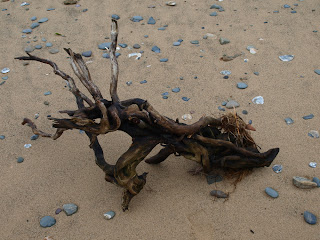I have finally started to use these fantastic worms, and I
must say that I’m very happy with them as a food source.
Microworms belongs to the Nematodes or roundworms. As the
name implies they are a very small species barely visible to the naked eye and
as such are only suitable as a food source for smaller fish and fry.
There are several positive aspects to these worms, firstly
they are so easy to care for and multiply very fast which means that with a bit
of planning you should never run out of worms.
Secondly your microworm culture will contain worms in
different stages of development; this means that your culture also contains a
food source for fish of various sizes. I for instance use the same culture to
feed fry and juvenile cories in different stages of growth.
So what do you need to get started?
Not much is the answer.
You will need one, preferably two containers. Plastic food
containers of pretty much any sort will do with 10-20 holes in the lid. Make
sure that the holes are as small as possible to lessen the risk of
contamination.
The culture material can be of varies number of organic
material, I’m still trying out different materials, at the moment I use
porridge which seems to work well. The material needs to be soupy but not too
runny. It should be wet enough to settle as an even surface in the container.
Use enough to cover 1-1.5cm of depth. Lastly you will also need a starter
culture of microworms, you should be able to find one either from the fish
community where you live or else buy one online.
I mentioned two containers; this is because it’s very handy
to keep two cultures going at the same time, one started about a week or so
after the other. Not only will you have a greater supply of worms, but having
two cultures means that you always will have a spare culture to start a new one
from should one crash.
Keep the culture in room temperature away from direct
sunlight and the worms should do well. If the culture starts to dry up just add
some water and stir. Once the culture(s) is running it takes 1-2 weeks before
you can perform your first harvest. When the culture is ready you will start to
see tiny worms climbing the sides of the container. To harvest the worms,
simply use a paint brush and brush the sides of the container, catching
whatever amount of worms you need. Stir the brush in a cup of water and use a pipette to select the chosen amount. Make
sure not to get any culture media into the tank while doing this, also always use a clean brush not to cross contaminate the different
cultures and try not to get tank water into the cultures.
If your culture starts to become miscoloured or mouldy it is
time to terminate it. This is another reason why it is good to have several
cultures running at the same time so that you always have a fresh culture to
start off a new one with. After about a month or so it’s it likely that you will have
to start a new culture and discard the old one. Simply wash the container and
follow the steps above again.
Source:
Hellweg, T., M. 2008. Culturing Live Foods: A Step-by-Step
Guide for Culturing One’s Own Food for the Home Aquarium. T.F.H Publications,
Inc.

































